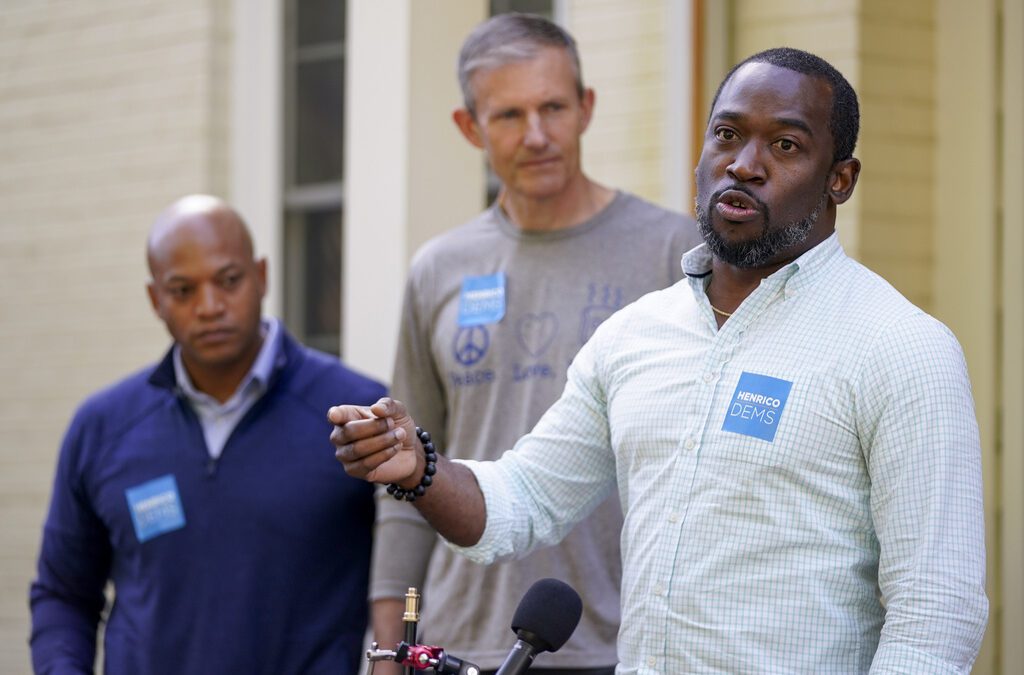
Virginia Attorney General Mark Herring met with a panel of Virginians for a virtual roundtable discussion on gun violence prevention.
According to the Virginia Department of Health, there were 1,667 non-fatal emergency department visits involving a gun in 2018.
RICHMOND – “We have to make sure that people don’t get numb to this,” Andy Parker said. Parker lost his daughter Alison, a news reporter, in 2015 when she and photojournalist Adam Ward were shot and killed on live television. A former employee at the Roanoke-based news station fatally shot the two near Smith Mountain Lake.
The problem, Parker said, is that gun violence happens too often now. People are becoming used to it.
“I think that it’s probably very easy to do because, you know, it’s happening with such frequency,” Parker continued. “People are starting to become numb to it, but we can’t allow that to happen.”
Parker was one of several people that took part in a virtual discussion on gun violence Monday. Virginia Attorney General Mark Herring organized the conversation, aimed at discussing ways to ultimately end gun violence. It included several gun safety advocates, police, and people who’ve been impacted by the public health crisis.
The conversation came on the heels of former Virginia Gov. Terry McAuliffe’s panel discussion on gun violence prevention last week. There, he noted that approximately 1,000 Virginians die each year due to gun violence.
According to the Virginia Department of Health, in 2018 there were 1,667 non-fatal emergency department visits involving a gun. Out of those cases, 87% involved men.
Accessories, Modified Weapons, and ‘Ghost Guns‘
In Virginia, people 18 and older may legally purchase rifles and shotguns from a licensed dealer. Those age 21 and over may legally purchase a handgun from a licensed dealer. Ammunition purchase requirements reflect the same ages for the type of gun the bullet enters.
However, some people don’t simply purchase a pistol and call it a day. They may also buy parts to modify their weapons, or additional magazines to make them capable of shooting multiple rounds faster than originally intended.
That’s what happened 14 years ago, when a shooter opened fire at Virginia Tech. A study on the tragedy revealed the shooter not only legally purchased a 9 mm Glock 19 handgun and a .22 caliber Walther pistol within two and a half months of the shooting, but also made six separate ammunition purchases in that time, as well as additional ammo clips.
“It’s the reason he could spray into a classroom and do the damage he did,” said Lori Haas, Virginia state director at the Coalition to Stop Gun Violence and the mother of a wounded student from that day.
Henrico County Commonwealth’s Attorney Shannon Taylor expressed the importance of looking at the purposes people use these accessories for—which includes adding parts that made guns more dangerous than their original purpose.
In one example, Maj. Spencer Cochran of the Richmond City Police Department noted that a person with a ghost gun—an untraceable, homemade weapon without a serial number—shot a Richmond police officer.
“There’s no way we can trace those guns back to specific individuals. They’re not really regulated right now,” Cochran said.
Herring noted that in order to purchase parts to make a ghost gun, people do not need background checks.
The Role of Hate
Another issue that arose during the conversation was the impact of hate and discrimination.
Gloria Pan, vice president of member engagement, campaign innovations, and gun control for MomsRising, pointed out that Asian Americans make up one of the fastest-growing communities in the state, accounting for nearly 7 % of the population.
It is also a community that has seen a troubling increase in hate-based discrimination, including verbal harassment and physical assault, since the start of the pandemic.
“Our community is frankly bewildered and we are scared,” Pan said. A recent mass shooting in Atlanta that appeared to target women of Asian descent has stoked those fears, and now more Asians and Asian-Americans are purchasing guns for the first time to protect themselves.
“Many of us are new Americans,” Pan said. “We are here building wealth and learning how to be American. And we don’t understand the dangers of actually bringing a gun into our homes and how that actually creates the chance we will be harmed.”
Fearing Violence from Within
Carol Adams, a Richmond police officer and domestic violence advocate, also touched on the dangers of having a firearm in the home—especially during a domestic dispute.
“This is a deadly intersection—you know, guns and intimate partner violence—impacting all women [and] is a disproportionate impact to Black Americans, Indian, Alaskan Native, and Hispanic women, and the LGBT community, which is most often left out, and communities with people with disabilities. They suffer at high vulnerability to severe forms of relationship abuse,” Adams explained. “And we know that when a gun is brought into the equation, that heightens it five times to where homicide is more than likely to occur.”
Black non-Hispanic women (44%) and multiracial non-Hispanic women (54%) are significantly more likely to experience rape, physical violence, or stalking by an intimate partner in their lifetime, compared to white non-Hispanic women (35%) and Asian or Pacific Islander non-Hispanic women (20%).
More than 45% of Alaska Native non-Hispanic men, 40% of Black non-Hispanic men and 39% of multiracial non-Hispanic men experienced rape, physical violence or stalking by an intimate partner. Approximately 28% of white non-Hispanic men experienced intimate partner violence.
A Proactive Approach
That’s why, said Rev. Dr. Emanuel Harris, president of the Baptist Ministers’ Conference of Richmond and Vicinity, it’s so important to work on solutions that address the root causes of issues that can spur gun violence.
“When I say the root cause of issues, I mean, like, even when you look at domestic violence and you look at the root cause—power and control—the abuser often is dealing with insecurity and fear that he needs individual therapy for.”
Harris also urged the importance of teaching proper emotional management at a young age.
“Now policy is certainly important. If someone’s abusive, they don’t need guns. If someone is dealing with an emotional crisis, they don’t need guns. So I’m not trying to dismiss policy, but I am saying that with the faith community, we have to hit it all,” Harris said. “We have to start very young with children, teaching them conflict resolution.”
Harris pushed toward taking a proactive approach.
“I see people who’ve killed themselves in suicide. I see people who, you know, get involved in lifestyles and ended up getting killed. So we have to address the root cause as mental health, mental wellness, having churches go through mental health first aid. These types of resources have to be almost mandatory in the community,” Harris said. “And we really have to take a proactive approach. I’d much rather minister before a funeral or without a funeral, than to minister during a funeral.”
Amie Knowles reports for Dogwood. You can reach her at [email protected].
Politics

Biden administration bans noncompete clauses for workers
The Federal Trade Commission (FTC) voted on Tuesday to ban noncompete agreements—those pesky clauses that employers often force their workers to...

Democratic shakeup in Virginia primaries for governor, lieutenant governor
Richmond Mayor Levar Stoney quit his bid for governor and jumped into the race to be the Democratic nominee for lieutenant governor. The race for...
Local News

The zodiac signs of 12 iconic women offer insight into their historic accomplishments
Zodiac signs can tell you a lot about someone’s personality. Whether they’re an earth, water, air, or fire sign, these 12 categories (which are...

Virginia verses: Celebrating 5 poetic icons for National Poetry Month
There’s no shortage of great writers when it comes to our commonwealth. From the haunting verses of Edgar Allan Poe, who found solace in Richmond's...





